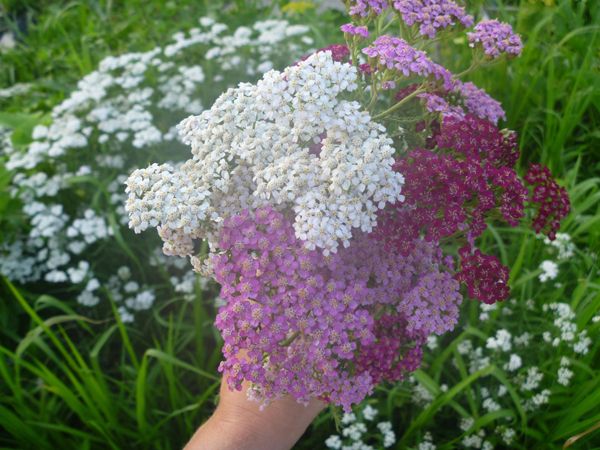
Achillea millefolium aka nosebleed plant, devil's nettle, milfoil, thousand-leaf, is a hardy perennial you use the leaves and flowers of for various things. It grows 6” – 24” high and can be found in both dry and wet places and meadows, fields, and roadsides. Zones 3 – 10.
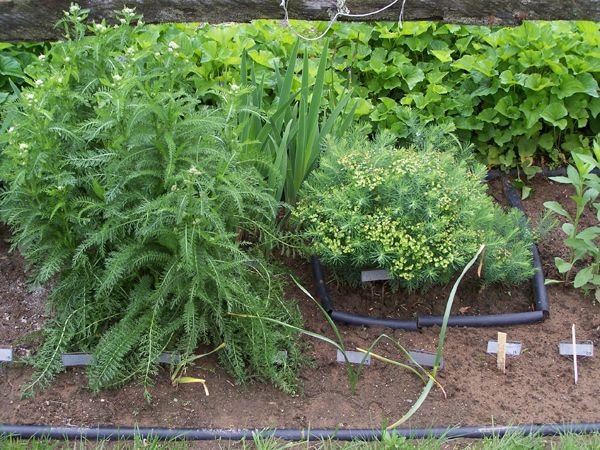
I first planted yarrow in the 2nd section of my new fence gardens sometime before 1995. I had dug it up from alongside a road. It was the common white form.
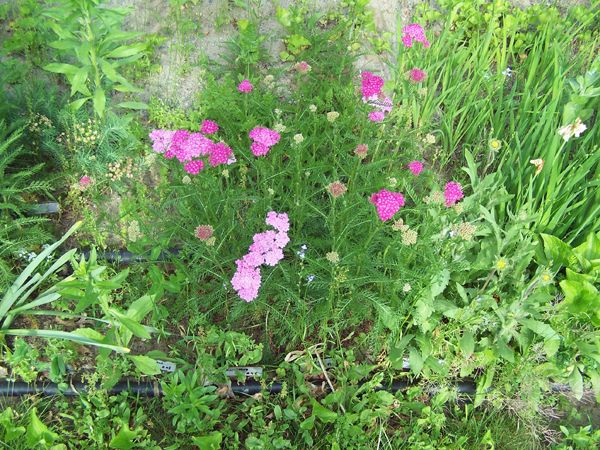
In 2007 I bought a deep pink variety and planted it near the white one. The next year, the white one had a pink tinge.
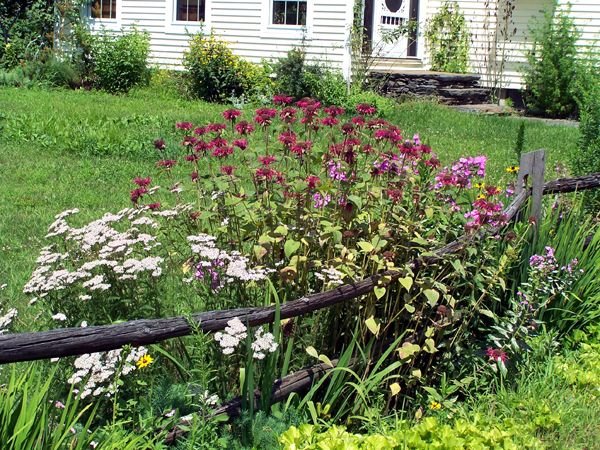
In 2016 when I created the New Herb garden I planted a large bed of the white variety I had started from seed. It did pretty well in the poor soil that year.
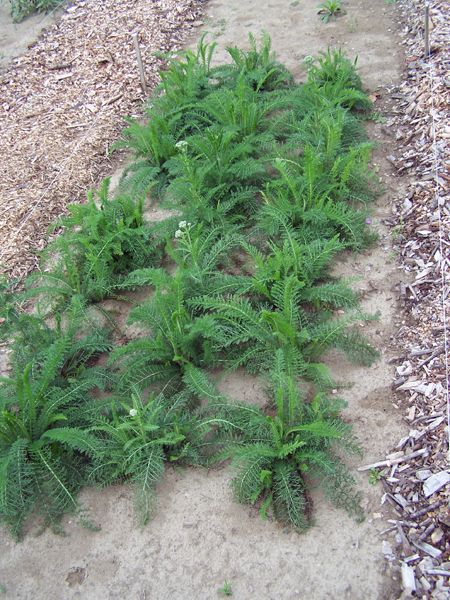
In 2017 when it came up, some of the flowers were slightly tinged pink.
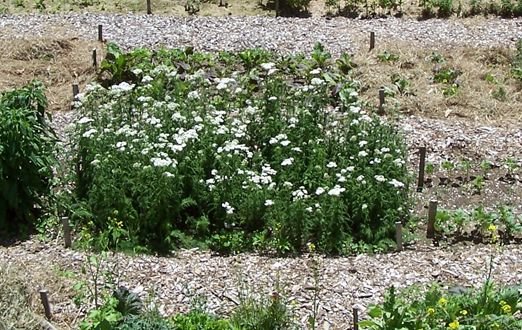
Flowers: 5 rays ¼” wide around a disc flower, white, yellowish or pinkish, 10 – 30 per cluster on top of the stem, flowers April – September
Leaves: stem rises from a basal rosette, with alternate leaves. Leaves are finely divided and get smaller the closer to the top of the stem. Leaves present as very lacy. Has a strong scent.
Cultivation: spreads via rhizomes, can be started from seed that has been stratified with cold and damp, or can be sown outside in spring. It needs light to germinate. Plant 1/8” deep. Germinates in 2 weeks. Likes well drained, moist soil. Full sun. Plants 12” apart. Deadhead for a 2nd bloom. Prone to mildew.
Harvest in summer and dry leaves and flowers for decoctions, infusions, liquid extracts, and tinctures.
Leaves can be used to make an aromatic, bitter astringent. They can be used to treat colds and flu. They are diuretic. They can relax spasms, relieve indigestion, and stop hemorrhages. Chew leaves to relieve toothache.
Can intensify medicinal action of other herbs.
Other info: leaves are rich in vitamins and minerals. Leaves speed decomposition of compost. Root secretions stimulate other plants’ disease resistance. May make skin photo sensitive with prolonged use.
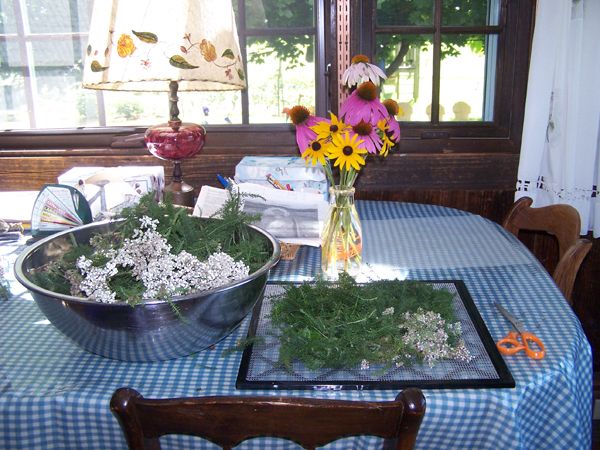
I’ve dehydrated the leaves and flower rays to feed to the layers over the winter.
There are many medical uses for this plant, but I’ve not yet tried any.
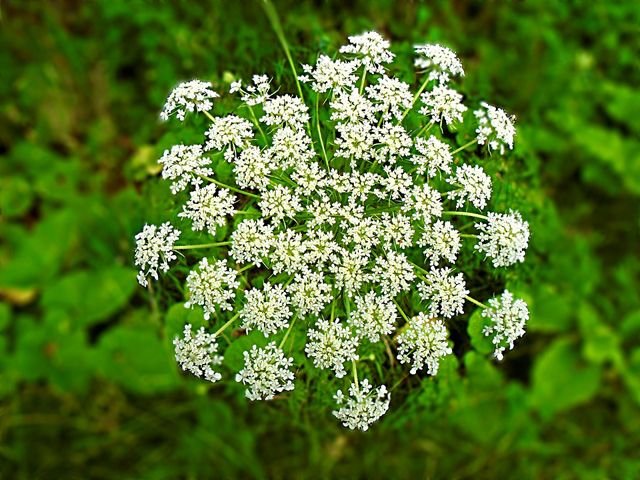
WARNING: This plant can be mistaken for hemlock from the carrot family.
References:
Encyclopedia of Herbs page 227
Fresh Eggs Daily - Herbs for Hens™: Yarrow
RD Home Herbs page 14
The Way of Herbs pages 251 – 252
Complete Book of Herbs page 38

Community Forums
Congratulations! You are now an Official Featured Blogger on Sotall.org. This post has been added to our growing directory of Steemit post for the Homesteading/Survival communities. You can claim your badge along with the code to add to your posts to let the world know you have chosen to help others Survive, Thrive and be Prepared! Click here to get the code
Downvoting a post can decrease pending rewards and make it less visible. Common reasons:
Submit
O my gosh I have so much naturally growing yarrow here! I have replanted it in my garden because it helps with bug reduction. I do yarrow and, first year I have started, wormwood in the herb garden as a pest deterrent.
I love the smell of yarrow. I have so many jars of those little white flowers lol, I need to stop harvesting some of these herbs. Maybe this year I will do a fresh herb side of the table at the farmer's market.
Downvoting a post can decrease pending rewards and make it less visible. Common reasons:
Submit
Wormwood is a good pest deterrent, and dehydrated, can be fed to layers in winter for worm/parasite control. Just feed sparingly, and so it is free choice.
Downvoting a post can decrease pending rewards and make it less visible. Common reasons:
Submit
We found quite a bit of yarrow when we lived up in Wisconsin. But now that we are in the Ozarks I haven't seen much Wild. A lot of look alikes like Queen Anne's Lace.
Downvoting a post can decrease pending rewards and make it less visible. Common reasons:
Submit
And perhaps the poisonous hemlock....
Downvoting a post can decrease pending rewards and make it less visible. Common reasons:
Submit